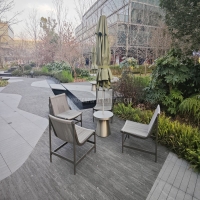Welcome to the website for landscape facilities products and knowledge.
How do landscape tables in historical or heritage sites respect the architectural context?
Landscape tables in historical or heritage sites play a subtle yet vital role in enhancing visitor experience while preserving the integrity of the surroundings. These elements are carefully designed to complement the architectural context, ensuring they do not overshadow the site’s historical significance.
Designers often use materials and styles that echo the site’s era, such as reclaimed wood or stone matching the original structures. The proportions and placement are meticulously planned to avoid visual clutter, maintaining the site’s authenticity. For example, a minimalist wrought-iron table in a medieval courtyard might reflect the period’s craftsmanship without disrupting the ambiance.
Functionality is balanced with cultural sensitivity. Tables are positioned to encourage engagement with the space, yet they remain unobtrusive. In some cases, interpretive plaques are integrated into the design, offering educational value without detracting from the aesthetic.
Ultimately, landscape tables in these settings serve as a bridge between past and present, respecting architectural heritage while meeting modern needs. Their success lies in their ability to blend seamlessly, honoring the site’s story without compromising its timeless appeal.
Related search:

Recommendation
Metal structure rattan chair without armrests for single person, with woven seat and backrest.